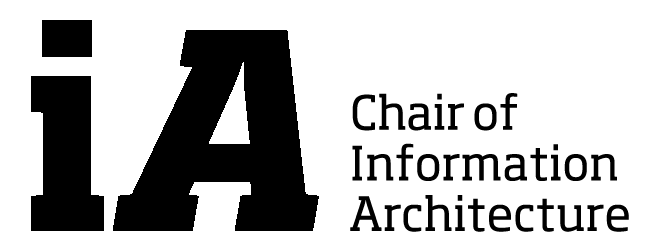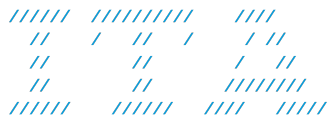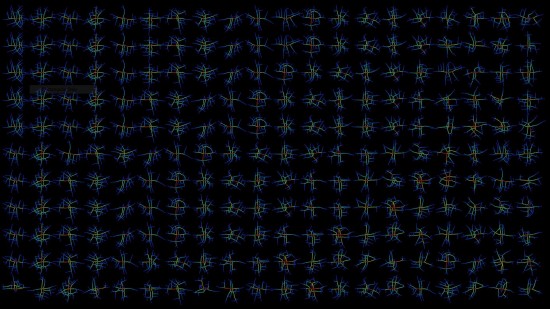Computational Planning Synthesis (CPS)
Emerging technologies for future urban planning
When working on urban planning projects there are usually multiple aspects to consider. Often these aspects are contradictory and it is not possible to choose one over the other; instead, they each need to be fulfilled as well as possible. Planners typically draw on past experience when subjectively prioritising which aspects to consider with which degree of importance for their planning concepts. This practice, although understandable, places power and authority in the hands of people who have varying degrees of expertise, which can mean that the best possible solution is not found, because it is either not sought or the problem is regarded as being too complex for human capabilities. To improve this situation, the project presented here intended to utilise multi-criteria optimisation algorithms to develop a cooperative computer-based planning system (CCPS) that can help to find the best compromises for complex problems (figure 1).

Figure 1: Koenig, R. (2013) Schematic design of the most important components of a CCPS
The first challenge in utilising multi-criteria optimisation algorithms for planning is formulating the problem: The planner’s often vague qualitative requirements need to be translated into a precisely quantifiable problem representation that can then be used in an optimisation algorithm. This difficulty of translation is one reason why planners do not utilise computers in this stage. This refusal, however, hinders the systematic evaluation of possible constellations of compromises between contradictory planning requirements. In addition, many examples of the use of optimisation methods for planning support are restricted to a single goal. The situation is further complicated by the fact that there are a mixture of contradicting and non-contradicting criteria as well as of directly measurable criteria and only indirectly interpretable measures.
Figure 2: Koenig, R. (2013) Evolutionary generated street networks.
To address the issue above, the main task of the proposed project was to develop a framework for combining various optimisation techniques. This makes it possible to integrate various problem formulations flexibly and to deal with a mixture of contradicting or non-contradicting goal functions. As a basis for this framework we used state-of-the-art evolutionary algorithms (EA) (Figure 2) and evolutionary multi-criterion optimisation (EMO) methods. The main argument for using EMO is its flexibility with regard to the problem representation, which was crucial for this project given the nature of the problems described above (examples are shown Figures 3 to 6). Nevertheless, the framework needs to be open to incorporate other individual algorithms that can efficiently optimise specific sub-problems. Our first area of focus was, therefore, the integration of various optimisation techniques and approaches to representing planning problems. From the user perspective we reversed the logic of generative planning systems: rather than exploring the results of different parameter settings or procedural rules, we allow a planner to define what performance a solution should have and the EMO framework then automatically generates a set of best compromise solutions. The task of deducing a solution from its desired properties is called an inverse problem.
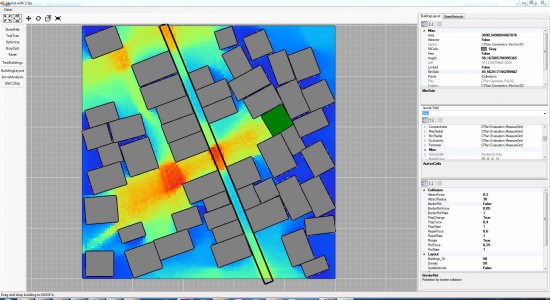
Figure 3: Koenig, R. (2013): Software-prototype for a building layout system. The building-layout can be optimized for certain isovist properties.
Our second area of focus was on the representation of Pareto-optimal solution sets (best compromises) for many contradicting and non-contradicting criteria. This representation also needed to be incorporated into a basic graphic user interface concept, which needed to encompass a way of intuitively defining problem situations, restrictions and the main planning parameters. The optimisation framework was developed using a test scenarios that comprise optimisation strategies for street networks, land parcelling and building volumes. The interdependencies of requirements at these different planning levels was studied in detail. To implement the scenario we used primarily existing methods to generate and evaluate spatial configurations.
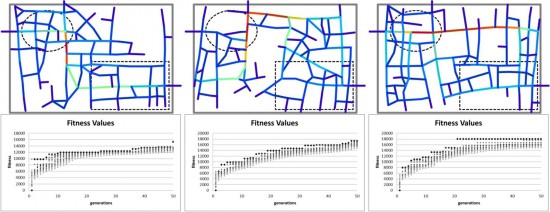
Figure 4: Koenig, R. (2013) Street network optimized for two contradicting criteria by using a weighted sum fitness function.
We aimed to produce an open framework with basic functionality to efficiently search for compromise solutions for complex planning problems and an experimental software prototype with an intuitive user interface for representing planning problems and presenting various compromise solutions. The potential of the framework was assessed using a test scenario. The approach we proposed contributes to making urban planning more evidence-based.
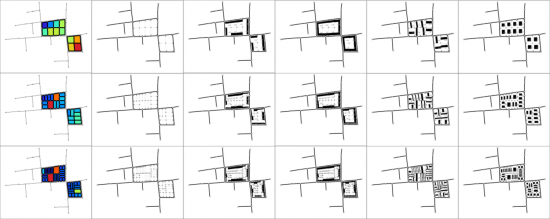
Figure 5: Example for the generation of urban patterns. Figure from Knecht and Koenig (2012).
“Yes, that’s what you want:
A villa in the countryside with a large terrace,
Out front is the seaside, out back the street,
with a beautiful view, cosy and elegant,
from the bathroom you can see the mountains –
but it’s just a short walk to the cinema.
The whole thing is simple and modest:
Nine rooms – no, maybe ten!
A roofgarden, with oak trees …
… a library and all around
solitude and the buzzing of bees.”
Kurt Tucholsky: The Ideal
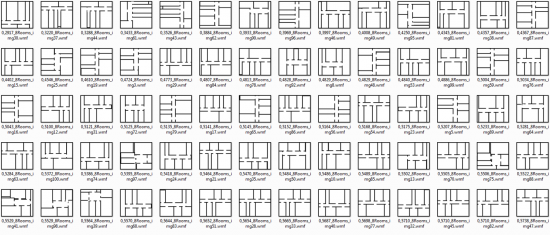
Figure 6: Evolutionary generated floorplans. Figrue from Koenig (2011).
Generative Models in Cognitive Design Computing
Modern cities exhibit growing complexities and dynamics where traditional urban design methods, which still rely on static and sectorial approaches, reach their limits for fast adaptation. At the same time, with the advent of big data and the improvement of our abilities to process large amounts of data as well as advances in artificial intelligence such as cognitive computing, new opportunities emerge for future-oriented computational design. The integration of cognitive computing in computational design assistance systems could revolutionize the urban design and planning process by allowing to model urban complexities and changing urban dynamics and thus helping to address and respond to these challenges in the urban design and planning processes.
A framework for this approach called “Cognitive Design Computing” has been proposed by Koenig and Schmitt (2016). The framework rests on four pillars: data analysis, user interaction and learning, geometry synthesis, and evolutionary multi-criterion optimization (EMO).The main idea of the method is that the designer can define certain restrictions and the corresponding spatial configurations are generated automatically. To allow a systematic design space exploration, the designer needs to interact with the generative procedure by changing the design framework as well as manipulating the initial geometric elements that are used as the starting point for the urban synthesis process.
Case study in Cape Town – Empowershack Project
Our methods have been applied and tested in the EmpowerShack project case study. An important aim of the project was to develop a layout of streets and plots based on the design framework developed by the Urban-Think Tank team (http://u-tt.com/). The design framework guides the development of a set of customizable functions, which limit the maximum width and length of a plot to ensure that a predefined house type can be placed on the plot. The case study scenario for the EmpowerShack project includes the investigation of a larger urban area, in particular, the informal settlements in Enkanini in Cape Town. From the Cape Town case study, it has been proved that our methods can efficiently and effectively assist the urban planning process taking into account urban designers’ needs. Planners can benefit from the interactive fast prototyping which saves a lot of manual work and improves the planning efficiency.
Videos:
The videos in this gallery are related to one of the main mechanism of CPS (generation, evaluation or optimization).
Publications:
- Koenig, R., Miao, Y., Buš, P., Knecht, K., Chang, M.C. (2017). Interactive Urban Synthesis: Computational Methods for fast Prototyping of Design Proposals, CAAD Futures 2017.
- Miao, Yufan, Koenig, Reinhard, Buš, Peter, Chang, Mei-Chih, Chirkin, Artem and Treyer, Lukas,(2017). Empowering Urban Design Prototyping – A Case Study in Cape Town with Interactive Computational Synthesis Methods in P. Janssen, P. Loh, A. Raonic, M. A. Schnabel (eds.), Protocols, Flows, and Glitches – Proceedings of the 22nd CAADRIA Conference, Xi’an Jiaotong-Liverpool University, Suzhou, China, 5-8 April 2017, pp. 407-416.
- Koenig, R. (2015). CPlan: An Open Source Library for Computational Analysis and Synthesis. In B. Martens, G. Wurzer, G. T, W. E. Lorenz, & R. Schaffranek (Eds.), Real Time – Proceedings of the 33rd eCAADe Conference (Vol. 1, pp. 245–250). Vienna: Vienna University of Technology.
- Koenig, R., Standfest, M., & Schmitt, G. (2014). Evolutionary multi-criteria optimization for building layout planning: Exemplary application based on the PSSA framework. In E. M. Thompson (Ed.), Proceedings of the 32nd eCAADe Conference – Volume 2 (pp. 567–574). Newcastle upon Tyne; UK. doi:10.13140/2.1.4951.4888
- Koenig, R., Treyer, L., & Schmitt, G. (2013). Graphical smalltalk with my optimization system for urban planning tasks. In R. Stouffs & S. Sariyildiz (Eds.), Proceedings of the 31st eCAADe Conference – Volume 2 (pp. 195–203). Delft, Netherlands.
- Koenig, R., & Schneider, S. (2012). Hierarchical structuring of layout problems in an interactive evolutionary layout system. AIEDAM: Artificial Intelligence for Engineering Design, Analysis and Manufacturing, 26(2), 129-142.
- Knecht, K., & Koenig R. (2012). Automatische Grundstücksumlegung mithilfe von Unterteilungsalgorithmen und typenbasierte Generierung von Stadtstrukturen. (Donath, D., Koenig, R., Ed.). Arbeitspapiere Informatik in der Architektur. http://infar.architektur.uni-weimar.de/service/drupal-infar/Arbeitspapier15
- Koenig, R. (2011). Generierung von Grundriss-Layouts mittels hybrider Evolutions-Strategie. Weimar: Bauhaus-Universität Weimar.
http://infar.architektur.uni-weimar.de/service/drupal-infar/AP_Grundriss-Layouts - Koenig, R., & Bauriedel, C. (2004). Computergenerierte Stadtstrukturen. München: Eigenverlag. http://entwurfsforschung.de/stadtebau/stadtstrukturen/
- Koenig, R., & Bauriedel, C. (2009). Generating Settlement Structures: A Method for Urban Planning and Analysis Supported by Cellular Automata Environment and Planning B: Planning and Design, 36(4), 602 – 624.
- Koenig, R., Donath, D., & Petzold, F. (Eds.). (2012). KREMLAS: Entwicklung einer kreativen evolutionären Entwurfsmethode für Layoutprobleme in Architektur und Städtebau. Weimar: Verlag der Bauhaus-Universität Weimar.
- Koenig, R., & Mueller, D. (2011). Cellular-automata-based simulation of the settlement development in Vienna. In A. Salcido (Ed.), Cellular Automata: Simplicity behind Complexity (pp. 23-46). Vienna: INTECH.
- Schneider, S., Koenig, R., & Pohle, R. (2011). Who cares about right angles? Overcoming barriers in creating rectangularity in layout structures. Paper presented at the eCAADe 2011: Respecting Fragile Places, Ljubljana, Slovenia.
Contact:
Dr. Reinhard König | reinhard.koenig@arch.ethz.ch | +41 (0)44 633 72 10
